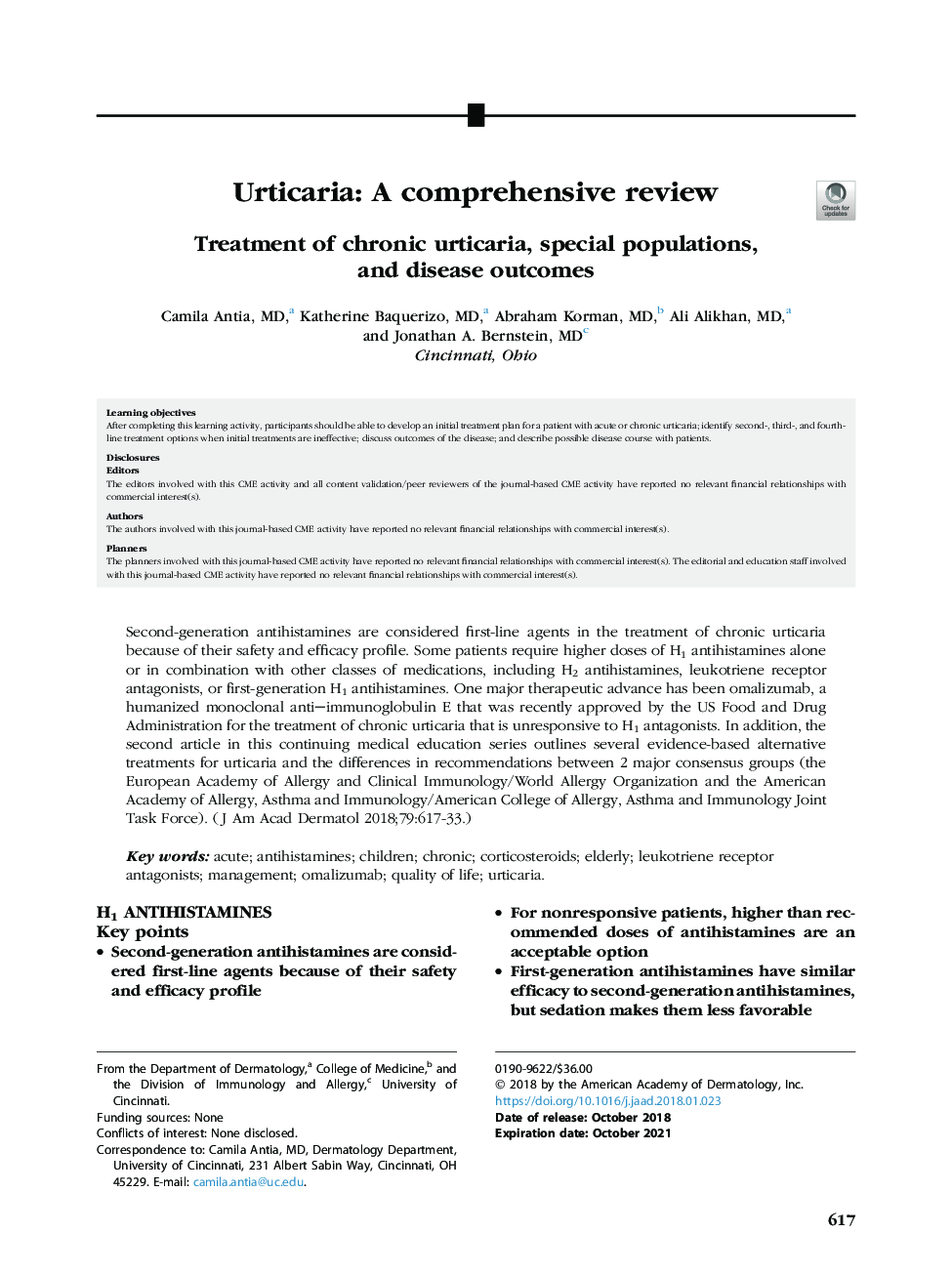| Article ID | Journal | Published Year | Pages | File Type |
|---|---|---|---|---|
| 10216773 | Journal of the American Academy of Dermatology | 2018 | 17 Pages |
Abstract
Second-generation antihistamines are considered first-line agents in the treatment of chronic urticaria because of their safety and efficacy profile. Some patients require higher doses of H1 antihistamines alone or in combination with other classes of medications, including H2 antihistamines, leukotriene receptor antagonists, or first-generation H1 antihistamines. One major therapeutic advance has been omalizumab, a humanized monoclonal anti-immunoglobulin E that was recently approved by the US Food and Drug Administration for the treatment of chronic urticaria that is unresponsive to H1 antagonists. In addition, the second article in this continuing medical education series outlines several evidence-based alternative treatments for urticaria and the differences in recommendations between 2 major consensus groups (the European Academy of Allergy and Clinical Immunology/World Allergy Organization and the American Academy of Allergy, Asthma and Immunology/American College of Allergy, Asthma and Immunology Joint Task Force).
Keywords
LTRADPUCSUASSTnarrowband ultraviolet BNB-UVBRCTMMFUASQuality of lifeAcute urticariarandomized control trialautologous serum skin testleukotriene receptor antagonistsAntihistaminesOmalizumabCSADelayed pressure urticariaAcutechronic urticariaElderlyCyclosporinemycophenolate mofetilManagementChronicurticaria activity scorePuvachronic spontaneous urticariaUrticariaChildrenCorticosteroids
Related Topics
Health Sciences
Medicine and Dentistry
Dermatology
Authors
Camila MD, Katherine MD, Abraham MD, Ali MD, Jonathan A. MD,
